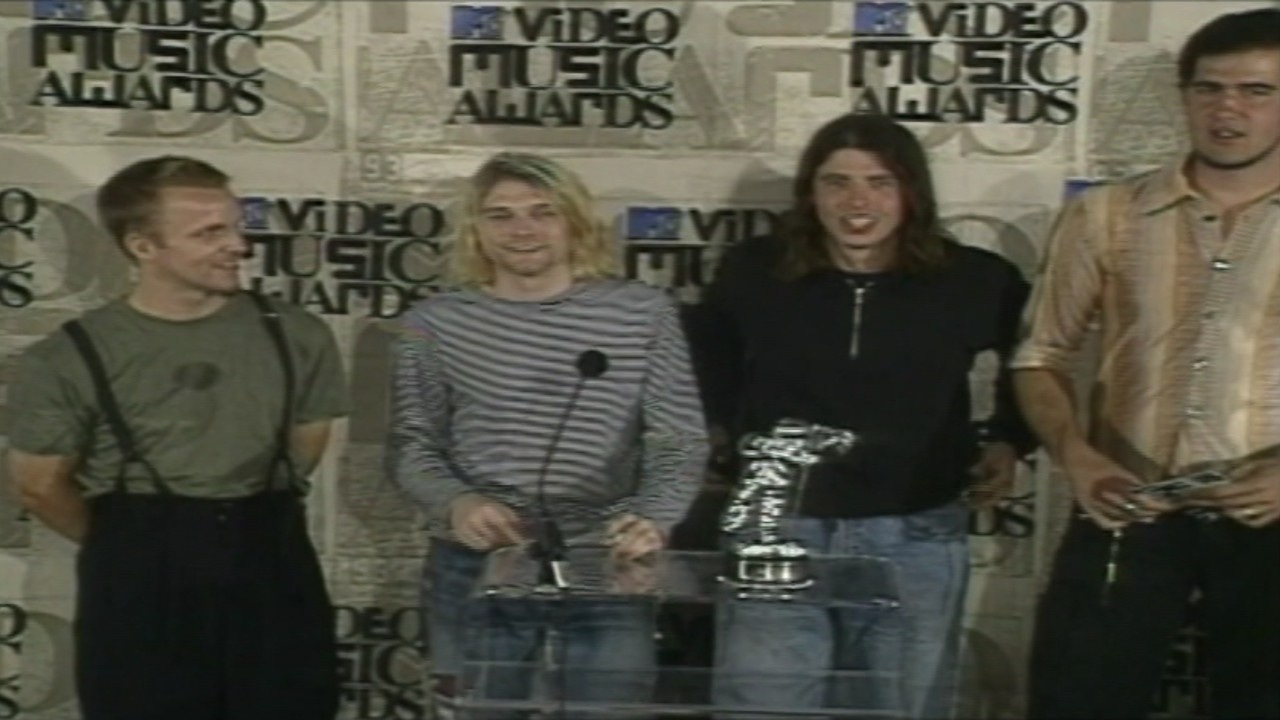Flashback Friday: Looking back on Nirvana’s Minnesota connection

Nirvana played in Minnesota a number of times in their seven years as a band before dissolving after lead singer Kurt Cobain took his own life on April 5, 1994 – 25 years ago this week.
That included performances at places like the Uptown Bar, 7th Street Entry, First Avenue and the Roy Wilkins Auditorium in St. Paul.
The most significant time the band spent in the state took place not in the Twin Cities, but just to the southeast in the small town of Cannon Falls.
It was there in February 1993 that the band – Cobain, bassist Krist Novoselic and drummer Dave Grohl – arrived to begin work on “In Utero” – the follow-up to their hugely successful 1991 album “Nevermind,” which had become an unexpected No. 1 seller and vaulted not only the band, but alternative rock and grunge into the commercial mainstream.
For its next full studio album, the band had elected to work with Steve Albini, who had produced records Cobain admired for artists like The Pixies and The Breeders.
It was Albini who suggested Pachyderm Studios, the residential complex at which Minnesota bands like Soul Asylum and the Jayhawks had recorded albums like “Grave Dancers Union” and “Hollywood Town Hall.”
It was also where Albini had previously worked with artists like The Wedding Present and singer-songwriter PJ Harvey, who recorded her album “Rid of Me” there in December 1992.
“I actually sent a cassette of that album, which hadn’t been released yet, to Kurt so he could hear what the studio sounded like,” Albini recalled. “With her permission, of course.
“I always liked the residential aspect of Pachyderm,” he continued. “It meant the band could stay on-campus the whole time we were recording. As opposed to having to get a hotel and keep going back and forth.”
Albini said the band’s management also liked the idea of recording in a more out-of-the-way location.
Especially when it came to the health of Cobain, who had struggled with widely-publicized stomach and addiction issues.
“Their management company was not into the idea of them recording in a big city where certain people could parachute in, get involved with the session and become a distraction,” Albini said. “I think there was concern with Kurt especially getting back involved with the drug scene. He was really in a clean and productive phase at that point and they wanted to try and maintain that.”
So – for almost two weeks – Albini and the band hunkered down in the studio making a record that included songs like “All Apologies,” “Heart-Shaped Box,” and “Pennyroyal Tea.”
The success of “Nevermind” meant many had been eagerly awaiting its follow-up. But Albini said neither he nor the band really felt pressure.
“I didn’t feel any pressure,” he said. “I just wanted to do a good job for them. And the band were very even-keeled. I don’t think they really cared about what was expected of them. They just wanted to make a record they were proud of. Of course, people in their orbit were concerned. There were people whose livelihood depended on Nirvana’s next record being successful.”
It was February in Minnesota, which meant snow and ice outside. So there wasn’t much beyond the studio to distract the band from the task at hand.
“I’m sure it’s a beautiful place to hang out in the summertime,” said Grohl, who went on to continued stardom fronting the Foo Fighters, in a 2013 interview with National Public Radio to promote the 20th anniversary reissue of “In Utero.”
“Unfortunately, we were there in February. It’s outside of Minneapolis. It was, like, sub-zero temperature. But the room where we recorded the stuff, the room sounded great and it was a comfortable place to be.”
Once in a while, band members were able to venture out into the surrounding community. But for the most part, Albini said the crew was anchored in the studio.
“I was busy all the time,” he said. “There were moments when one band member or another might not have been needed. And they could go off and do their thing. But we were pretty much snowbound. Which wasn’t a drawback. It let us focus on what we were there to accomplish.”
Pachyderm has changed owners over the years, but remains in operation today. Nirvana, meanwhile, elected to do some remixing on certain tracks after the album had been recorded, a decision Albini was not in favor of.
But the record debuted at No. 1 when it was released in September 1993, and received plenty of commercial and critical acclaim.
“I’m not a nostalgic person by nature,” Albini said. “I don’t tend to revisit things I’ve worked on in the past very much at all. But in 2013, I had reason to really listen to that album again when the anniversary approached and they did the reissue (featuring the original mixes).
“Dave, Krist and (Nirvana and Foo Fighters member) Pat (Smear) came here (to Chicago) and we worked on that. Listening to the masters again for the first time in a long time, I was just really impressed with the job they did as a band.”